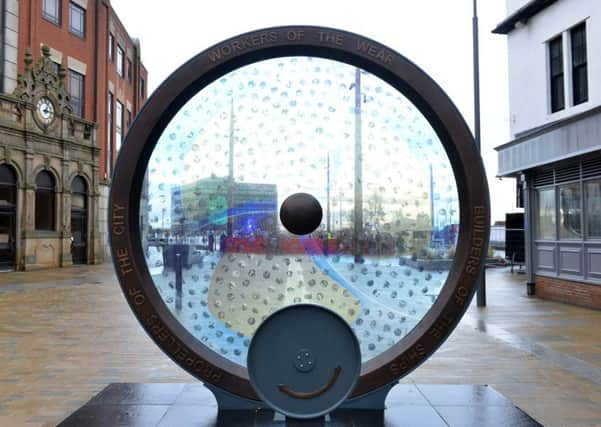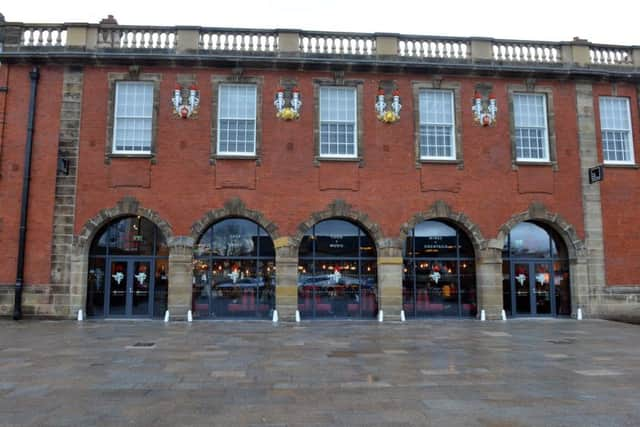Sunderland BID: City making culture more accessible to all


In the early, golden days of cinema the city was home to dozens of picture houses, where crowds would gather to watch the newest releases.
The first recorded screening in Sunderland was 1896 at the Victoria Hall, where audiences could “enjoy” movies such as Operation in A Dentist’s Chair Under Gas.


Advertisement
Hide AdAdvertisement
Hide AdIt wasn’t long after that – 1907 – that the Empire Theatre opened its doors for the first time, officially launched by the variety star of the moment, Vesta Tilley.
It’s only fitting then that the new, fast growing cultural scene in Sunderland should be centred around this area of the city, which is becoming the hub for arts, leisure and entertainment.
From Keel Square to the Empire, changes have –and are – taking place which makes this quarter the focus of culture in the city.
New developments like The Fire Station are improving a spot which has changed significantly over the last two or three decades and is now home to a new outdoor space.
Advertisement
Hide AdAdvertisement
Hide AdImproving and developing the area has always been high on the priority list for Sunderland Business Improvement District (BID) which fully supports this move to creating a recognisable cultural destination in the heart of the city.
Organisations such as the Music, Arts and Culture Trust (MAC) work hard to promote a range of diverse activities, encouraging people of all ages and backgrounds to play musical instruments, act, sing or create poetry.
The trust is also part of the Sunderland Cultural Partnership – a collaboration between several organisations including the university and city council – which works to try and promote a new cultural climate for the city.
And so far, the changes are positive. Last year, the doors opened on the first part of a £3.5m development of the once-derelict Fire Station in High Street West.
Advertisement
Hide AdAdvertisement
Hide AdThe conversion involved creating a new heritage centre, along with new dance and drama studios, which quickly caught the attention of Dance City.
The region’s leading dance organisation now offers around 30 different classes each week with everything from tap and ballet to salsa and belly dancing, and welcomes beginners as much as experienced dancers.
The Fire Station will also boast a new auditorium from next year, which will be smaller than the Empire Theatre and meet the needs of musical and theatre groups looking for a smaller space to perform.
This development has also served the purpose of highlighting the businesses around High Street West and Low Row, which perfectly compliment the leisure and entertainment offerings in place.
Advertisement
Hide AdAdvertisement
Hide AdLow Row certainly came into its own during the summer FanZone screenings, highlighting the variety of pubs and bars which are on offer in the shadow of the Minster.
It’s now very much part of the city’s leisure offering, with a wide selection of bars and pubs.
Revolution, Establishment, The Lambton Worm and Greens are just a few of the go-to places in Low Row.
The Lambton Worm in particular is worth a visit for its quirky mural in the men’s toilets, which is guaranteed to cause a chuckle.
Advertisement
Hide AdAdvertisement
Hide AdAll of the bars also offer great food throughout the day, just one of the reasons they are so popular with guests staying at the near-by Travelodge or going to the Empire.
Keel Square, which was completed in 2015, is now the city’s most-used public space, and has become a central hub and meeting place for those living and working nearby.
Inspired by Wearside’s shipbuilding past, it features artwork to represent the city’s industrial heritage such as the Keel Line, a strip of granite showing he names of 8,102 ships which were built in the city which runs straight through the square.
Another piece of art called Propellers of the City marks the start of the Keel Line, and is a 3.5-metre high bronze and glass sculpture which displays photos of 400 ex shipyard workers.
Advertisement
Hide AdAdvertisement
Hide AdWith fountains and ornate benches, the space also comes to life during the winter when it hosts the annual lights switch on and becomes home to the city’s open-air ice rink.
And of course Keel Square is also an unofficial gateway to the whole of High Street West with its independent shops, national chains, café and restaurants.
Among all these changes, The Empire Theatre remains and a huge investment some years ago meant the theatre could accommodate major West End productions such as The Lion King, War Horse and Wicked.
The theatre is also a popular venue for live music concerts, with a host of big names appearing each year.
Advertisement
Hide AdAdvertisement
Hide AdAlso sitting within the cultural quarter is Sunderland Minster, which has previously hosted music concerts and festivals, has become a popular venue for art exhibitions and has even hosted awards ceremonies.
“Our cultural quarter is an up and coming part of the city and it’s exciting to watch it grow,” added Sharon.
“Projects like The Fire Station are really helping to put the city on the map and bring in new visitors, as well as help establish Sunderland as somewhere which is embracing change for the better.
“The variety of entertainment, classes and arts projects taking place makes culture accessible to a real cross section of people, from children through to grandparents.”